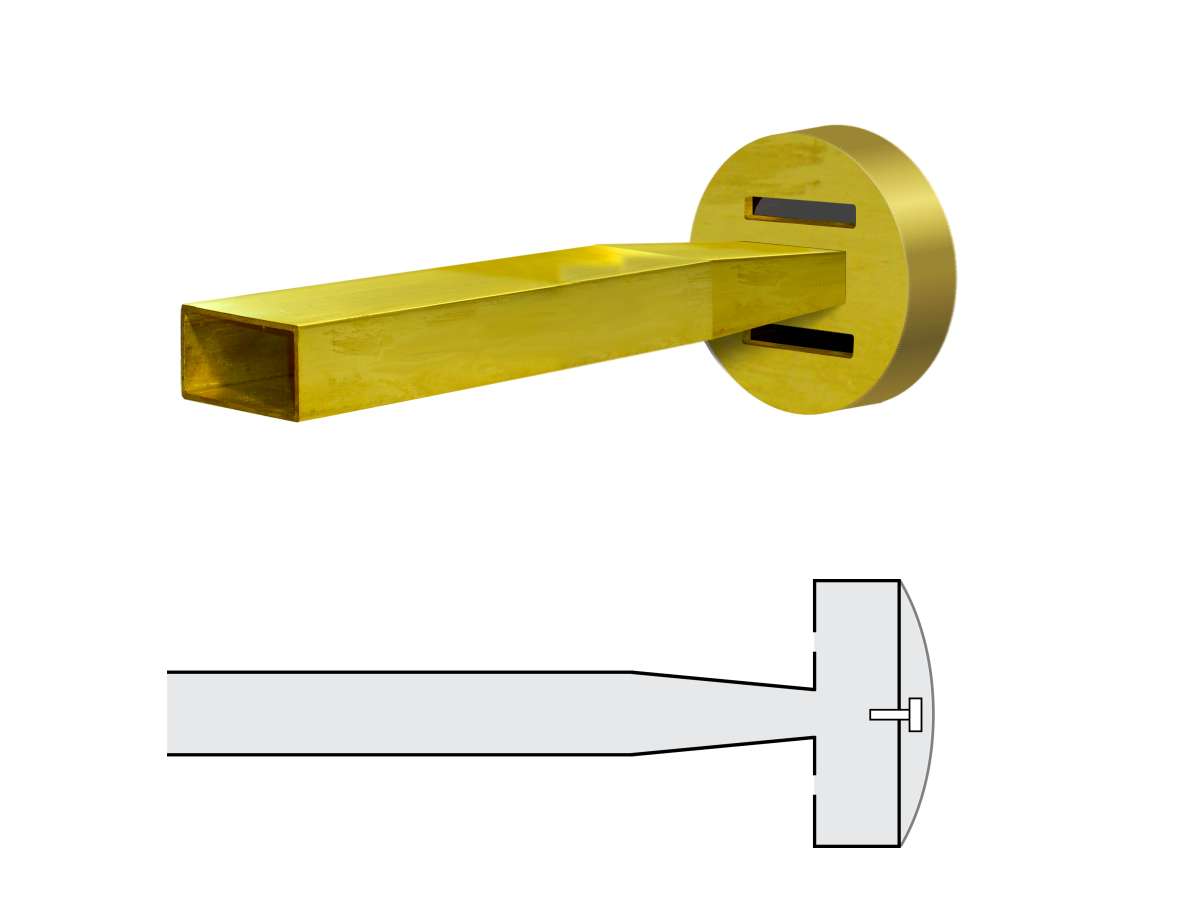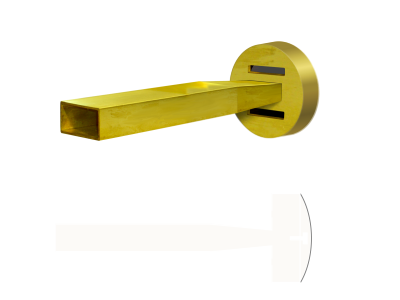Cutler-Feed

Figure 1: Cutler-feed, 3D model and cross-sectional sketch
Cutler-Feed
Cutler-Feed is a source of radiation used by parabolic antennas often. It consists of a resonant cavity at the end of a waveguide, which is tuned by means of an adjusting screw, with two radiating slots which feed energy to the reflector. The waveguide is tapered in non-critical dimension to fit between the slots. In practice, the resonator can be designed both round and square.
Due to the waveguide in the center, the radiation characteristic of the Cutler feed has an approximately sinusoidal power distribution. The advantage is that the waveguide is at the same time the radiator mounting, so no additional rods are needed. The disadvantage is that only simple linear polarization is possible. A limiting factor is also the impedance matching, that gives a bandwidth of 3 to 5 percent only.
The inventor and eponym was Cassius Chapin Cutler (December 16, 1914 – December 1, 2002) from Bell Laboratories (New Jersey, USA).

